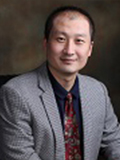|
| Professional Experience |
|
Professor: Fudan University Shanghai Cancer Center (2017.04-Now) Professor: Institutes of Biomedical Sciences, Fudan University, China (2008.10-2017.03) Associate Professor: Institutes of Biomedical Sciences, Fudan University, China (2008.1-2008.10) Postdoctoral fellow: Princeton University, USA (2004.11-2007.12)Visiting Scholar: University of California at San Diego, California (2011.5-2011.8)
Education: PhD in Biophysics: Department of Biological Sciences and Technology, Tsinghua University, China (1999-2004) Bachelor of Science: Department of Biological Sciences and Technology, Tsinghua University, China(1995-1999)
Awards and Honors: Xplorer Prize (2021) The twelfth Shanghai Academy of natural sciences peony Award (2017) The First Prize in Natural Science Award of the Ministry of Education (2016) VCANBIO Award for Innovations and Breakthroughs in Life Sciences and Medicine (2016) Chief scientist of National Research and Development Program of China (2016) China Outstanding Youth Award for Science and Technology (2016) China Youth Award for Science and Technology (2016) Changjiang Scholars Program–Distinguished Professor (2015) Tan Jiazhen Life Sciences Award (2015) Academician Shusen Lanjuan Talent Foundation (2015) WuXi PharmaTech Life Chemistry Award (2015) National Science Fund for Distinguished Young Scholars (2014) Shanghai Youth Award for Science and Technology (2014) Program of Shanghai Subject Chief Scientist (2014) Outstanding Young Scholar (2012)
Research Focus: In eukaryotic organisms, cell-type-specific gene expression is mediated by combinatorial action of transcription factors and transcription machineries in the context of chromatin, which provides framework for differential gene expression and cell fate determination during development. Regulatory proteins, RNA, noncoding bits of DNA, even chemical and structural alterations of the genome itself control how, where, and when genes are expressed. We want to reveal the structural basis of the dynamic regulation of chromatin structure and molecular mechanism for transcription in the context of chromatin. Currently, we are developing comprehensive and high-throughput technologies with potential clinical and therapeutic applications.
|




